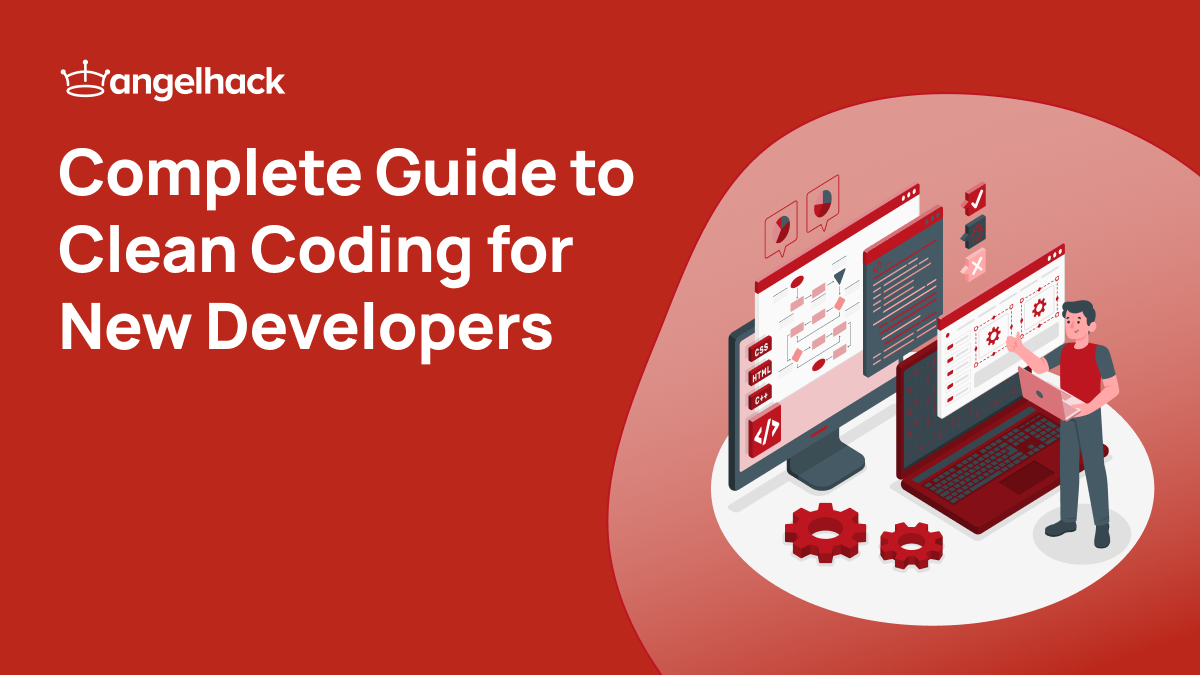Guest Post By: Deep Kakkad
Want to bring your ideas to life? Here’s a step-by-step guide to starting a company from an AngelHack hackathon.
Have you ever wondered what it takes to turn an idea into a company? In this extensive guide, we’ll guide you through the next steps, from validating your idea to building a team. If you’re having trouble getting out of the starting blocks, this guide will help you overcome the challenges that we’ve noticed participants face — including validating the idea, raising capital, hiring, and scaling into a healthy business.
Step 1: Validate Your Idea
You’re passionate about and are obsessing over your hackathon project for a while now, and now you’re finally ready to put that love into action. Something inside of you is pushing you to put your work into the world. You’ve got the excitement and the drive you need, you need a process to complete the project and make your idea into reality. Even though you have built a working prototype of your idea while in the hackathon, did you validate it before you started? Probably, it’s a No.
And know that asking validating if you would use your own product (self-validation) doesn’t count!
And it’s okay if you didn’t validate your idea before building it at a hackathon. Hackathon projects, at times, start as passion projects. But now, when you aim to take it to the public, potential users, and investors, there’s a lot of other factors that you need to take care of.
The most crucial step in creating your dream product is to validate your idea (and I’m not exaggerating it). As boring as this may sound, making sure that you are working on something that has a need, is really important.
How to validate the idea?
- Understand what/who (let’s call them competitors) else exists in the market that solves the same problem…
- In the same way as well as in a different manner
- Is the competitor targeting the same people as you are?
- If a competitor exists (it probably will), how are you different?
- Talk with your potential customers (go for people who are not close friends or relatives) and ask if they’d use your product to solve their problem.
- If yes, how much would they be willing to pay?
- If not, get their suggestions on what you can do to help solve their problem?
There are more things you can do to validate your idea, including creating a signup form on a landing page that describes what your product/solution is about to let people sign up.
Step 2: Build a Team
You have your prototype, with a validated concept. Now you need people to help you turn it into a product. Chances are, you have the team from the hackathon who you’ll work together even after the hackathon to build the product.
If that’s not the case, it’s time to look for like-minded people. Post on active designers, developers, hackers communities. Take your time with finding someone who is as passionate as you about solving the problem. People are often afraid of hiring people smarter than themselves, but with caution and good team-spirit, it’s only going to benefit you and your startup. As they say, if you are the smartest person in the room, you are in the wrong room 🙂
Who to hire? A trio of a developer, a designer, and a marketer can achieve heights. But it depends a lot on your focus and your solution. For design focused solutions, you may need an extra designer. Likewise, for an AI-product, you may need an AI expert.
How do I pay?
Majority of the time, at an early stage, you may not have money to pay your early-team. In such cases, you compensate your team through equity of your to-be company. How to do that and how much to give away, is a whole different topic and depends on who brings what on the table. To survive, you may allow yourself & your team-mates to have a full-time job.
Step 3: Building a Product
In your quest to build a product, you’ll have to ask a lot of the following questions:
Who will use my product? Who is it for? How tech-savvy are they?
What are some important features that we must include in the initial product?
What steps would the user need to take to reach the end goal?
How to make the customer journey smooth and streamlined?
How can we make money?
What are the revenue streams?
Should there be free trials?
This will be the time when you (and your team) will take care of multiple aspects of building a product: UX/UI, the best tech-stack, architecture, marketing and analytics tools, etc.
After putting all the pieces together… The outcome of this step is an MVP (Minimum viable product: a product that has the minimum amount of features needed to be able to be used by the customer and solve their problem).
Step 4: Raising Capital
(Not) Every company needs money to fuel growth!
How much and when you raise is entirely dependent on the industry you’re entering, what stage you are at, and your business model. Of course, there are also other factors including your location.
Generally, a company at this stage raises an angel or a seed investment round that ranges from tens of thousand dollars to a few hundred thousand dollars depending on your need.
When I said ‘not every company needs money’ at this stage, you may also choose to bootstrap. Meaning, you take the lean way of starting up until you reach a particular stage of starting up your business. You may ask, ‘but why not raise?’ Well, raising money is an additional responsibility that may consume a lot of your time. And remember, you receive money in return of giving away a percentage of your business. So, raise, only when you NEED the money, not when you can just use some money.
Step 5: Hiring
Hiring and ramping up is a crucial part of scaling a business. An important question while hiring is ‘what skill sets to look for while hiring?’. This would be the time to structure the team. Remember when we said you can start with a trio (developer, designer, and marketer) who is your early-team, should now become the leadership team leading their own departments, and according to the needs, hire their team.
On a different perspective, it’s also important to know ‘what does the employee want?’. It’s said that ‘Your employees are your customers’. Because, if you treat your people as if they were your customers, you inspire them to give you back with their best efforts.
Remember, hiring goes hand-in-hand with scaling.
Step 6: Scaling
Scaling is a lot about the mindset of growing. At this stage, you have to commit to growing fast. And sometimes people are not ready with the pace, which is fine. But, if you choose to scale your business, you have to devote your energy to bringing growth.
How to scale a business?
There are multiple ways to look at scaling your business, but the idea is to grow the company in Scope and size. According to HBS’s study, there six areas founders could focus on:
- Staff
- Shared values
- Structure
- Speed
- Scope
- Series X
Let’s take an example. Say you started an ecommerce store serving (delivering to) Asian countries. You have reached the peak in your business when everything is going set: procedures are set, the team is stable, the operations are perfect. And, it’s the perfect time to enter Latin America. That’s when you start hiring a team in LATAM to scale there. This is one example of scaling the scope.
Sounds exciting?
AngelHack’s 12-week pre-accelerator program, HACKcelerator, connects ambitious hackers with thought-leaders and experienced entrepreneurs to help them become more versatile. We help top teams refine their ideas to build their hackathon winning prototype into a fully fledged startup, similarly to what we discussed in this post.
Our proven curriculum combines mentorship, speakers and workshops to offer the best in startup education. With a startup portfolio valuation of $70M, acquisitions from tech giants such as Google, and BOX, AngelHack is the highest valued pre-accelerator in the industry.
Conclusion
Thanks for reading — and if you liked this, do make sure to share this with your hacker friends and subscribe to our newsletter to receive more of such interesting insights.
Deep was the regional manager, South Asia at AngelHack. Apart from work, Deep could be found on online forums interacting and supporting student entrepreneurs through their journey.



